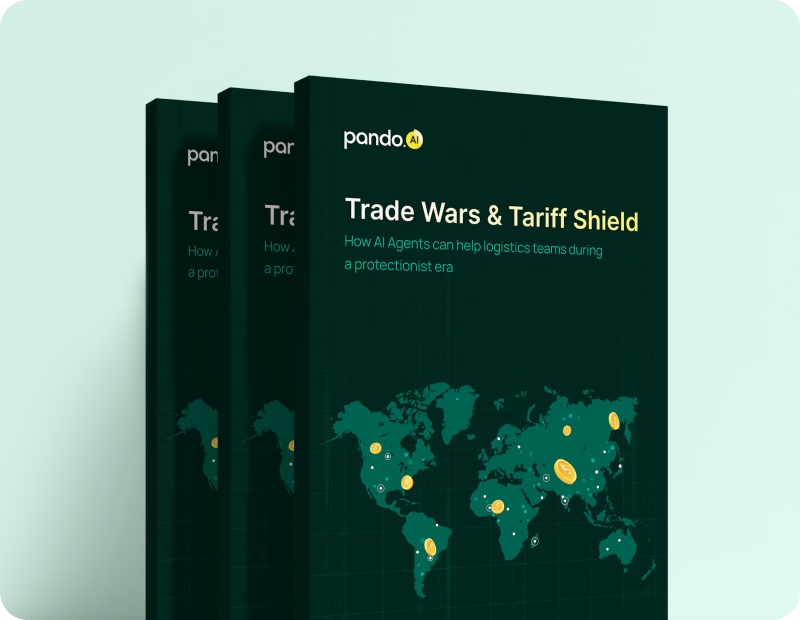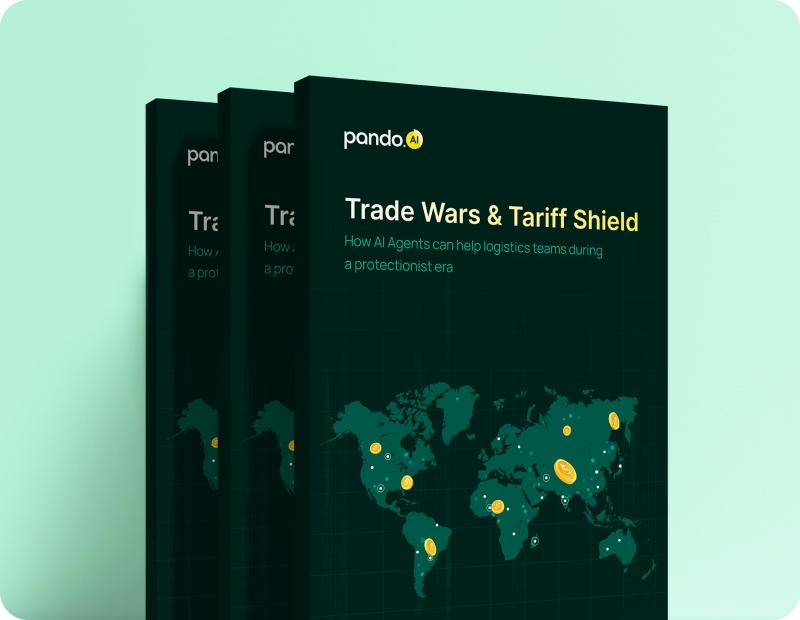-
Products Products
- Industry
- Initiatives
- Resources
- Company
- Book a demo

Before you go: Logistics leaders just dropped the truth on AI
The State of AI in Logistics 2025 is here — no hype, just real conversations and raw insights.
Navigating freight transport: Flyway, waterway, or the highway?
We’re unveiling the most sustainable way to transport your freight.
Published on October 13, 2023 • 6 mins read
Durga Pratiha

We’re unveiling the most sustainable way to transport your freight.
We’re onto our final blog in the “Sustainability in movement of goods for SCM” series. Here’s a quick recap of what we’ve covered so far:
In the previous blogs of the series, we shed light on the significance of greener practices in road transport, emphasizing the responsibility and opportunity we must take to minimize the environmental impact of our freight movements. We also took a closer look at the environmental toll that ocean shipments exact. While these international trade routes are integral to our globalized world, they come with their own set of challenges.
In this blog, we take a look at the age-old debate: what’s the best mode of transport to use to drive sustainability and reduce carbon emissions – air, road, ocean, or a combination of all three?
Global industry wrestles with the ‘carbon footprint dilemma’ amid sustainability goals
The "carbon footprint dilemma" refers to the complex and often conflicting choices individuals, organizations, and governments face when trying to reduce their carbon footprint, which is the total amount of greenhouse gases, primarily carbon dioxide (CO2), and other emissions produced because of human activities. This dilemma arises from the need to balance environmental concerns and the reduction of carbon emissions with economic, social, and practical considerations.
Before we figure out the best mode of transport, it's essential to understand the carbon footprint associated with each option.
Air:
- Speedy but carbon-intensive: Air transportation is the fastest mode of shipping goods, making it ideal for time-sensitive deliveries.
- Carbon emissions: Air freight is notorious for its high carbon emissions. It's estimated that air transport can produce up to 90 times more CO2 emissions per ton-kilometer than ocean shipping.
Land:
- Versatile but polluting: Road transport offers flexibility and accessibility, making it suitable for short and medium-distance shipments.
- Carbon emissions: Although more energy-efficient than air travel, road freight is a significant contributor to carbon emissions, particularly in long-haul journeys.
Ocean:
- Economical but slow: Ocean shipping is the most cost-effective option for long-distance transportation, especially for bulk goods.
- Carbon emissions: While ocean transport emits less CO2 per ton-kilometer than air or road, the lengthy voyage times can offset this advantage for time-sensitive deliveries.
The power of seamless combination yields a potent result
It’s essential to recognize that there’s no one-size-fits-all answer to the carbon footprint dilemma. Instead, the most effective approach often involves integrating various modes of transport strategically.
Intermodal transportation:
This involves seamlessly transitioning between different modes of transport within a single supply chain journey. For instance, goods may be shipped across the ocean and then transferred to trains or trucks for distribution. This approach can optimize both cost and carbon emissions. The most common intermodal transportation routes involve shipping goods by sea from one continent to another and then transferring them to trucks or trains for distribution within the continent.
Intermodal transportation is a growing industry. The global market for intermodal transportation is expected to grow at a compound annual growth rate of 4.5% from 2022 to 2028.
Multimodal transportation:
Here, various modes of transport are used sequentially, with each leg of the journey assigned to the mode best suited for that portion. This strategy helps balance efficiency and sustainability.
For example, a shipment of goods might be transported by rail from a factory to a port, then by ship to another country, and finally by truck to the final destination. This would allow the shipper to take advantage of the strengths of each mode of transportation, such as the speed of rail, the capacity of ships, and the flexibility of trucks.
Case study: The hybrid approach
Let's consider a hypothetical scenario where your company needs to transport electronics from Asia to North America. We’ll see how adopting a hybrid approach to transportation can be a game-changer in not only cost savings but also environmental responsibility. It's crucial to note that the choice of transportation mode should be carefully tailored to the specific goods being transported.
Ocean freight for long-distance travel:
The journey begins by strategically deciding to opt for ocean freight to transport your electronics from Asia to a West Coast port in North America.
Ocean freight is chosen for its efficiency and lower emissions, especially over long distances. Container ships, with their capacity for large loads, offer a greener alternative to air transport for this leg of the journey.
Airplanes for time-sensitive deliveries:
Air freight is the swiftest mode of transportation, making it ideal for transporting electronics with time-sensitive delivery demands.
It is essential to weigh the advantages of speed against the disadvantages of cost and environmental impact when considering air freight for transporting electronics, as it may not always be the most cost-effective or eco-friendly option.
Rail and road transport for inland travel:
As your goods arrive at the West Coast port, you face the pivotal decision of how to transport them to their final destinations across North America.
Here, it's your call: will you opt for rail or road transport? You weigh factors like distance, accessibility, and cost-effectiveness. The eco-friendly nature of rail transport, with its lower carbon footprint per ton-mile compared to trucks, may significantly influence your choice.
Local distribution with eco-friendly vehicles:
Finally, for the last stretch of your journey – local distribution to your valued customers or retail partners – you uphold your commitment to sustainability.
Electric or hybrid vehicles can be used for local distribution. These vehicles produce fewer emissions than traditional diesel trucks, contributing to a greener last-mile delivery process.
Your path to sustainable shipping
In the ongoing debate between air vs. road vs. ocean transport, it's clear that each mode of transport has its strengths and weaknesses in terms of carbon emissions. However, the key to achieving a lower carbon footprint in the supply chain lies in strategic planning and a willingness to adopt a hybrid or multimodal approach when necessary.
Ultimately, the most sustainable way to transport your goods should match what your supply chain needs, how quickly you need things delivered, and what is the nature of the goods being moved. There are logistics technology solutions that can help organizations like yours select the most efficient and sustainable routes and modes of transport to move your goods.
By carefully thinking about each shipment and picking the right way to transport it, organizations like yours can make a big difference by shrinking your carbon footprint to help the environment. The future of supply chain management balances efficiency and environmental responsibility, ensuring that goods reach their destination while minimizing their impact on the planet.
Subscribe to Pando blog and Crossroads newsletter now!
Stay up to date with the latest logistics, transportation, and supply chain tips and news.
Subscribe Here!













